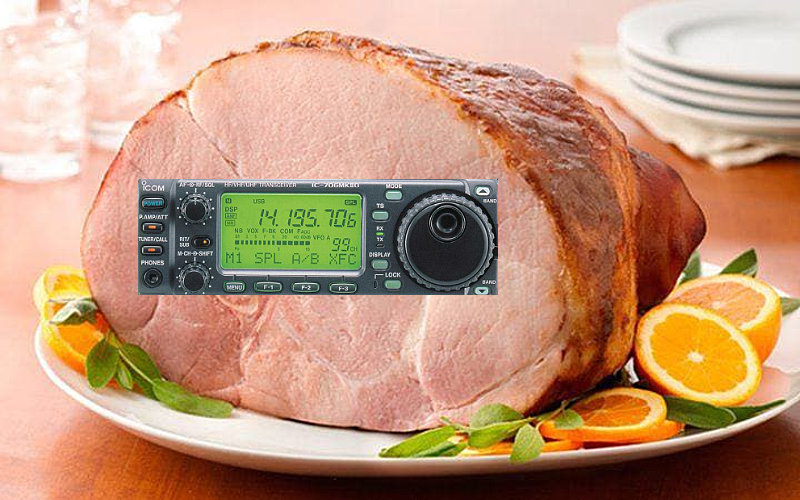https://modernsurvivalblog.com/communications/ham-radio-a-quick-primer/
HAM Radio | A Quick Primer
by Ken Jorgustin | Updated Dec 18, 2019 | communications | 12 comments

Guest Article by “Minerjim”
Ham radio can provide a reliable independent means of communications in a survival situation. Hams presently provide communications services in emergencies around the globe, usually on a volunteer basis.
While I think many people who live the “prepper lifestyle” have bought radio equipment, I suspect that they have not learned how to use it fully, or have not really investigated all of Ham radio’s potential. It’s a BIG field to investigate!!!
I’ll attempt to outline the basics of ham radio frequencies, their attributes and downsides, and hopefully arouse some to investigate radio communications further.
HAM FREQUENCIES
Why talk about Ham (amateur radio operator) frequencies only?? Why not talk about all radio frequencies???? The main reason is that certain frequencies are blocked out for use by Hams, to practice with and learn about. This has been going on for about 100 years.
There has been lots of data and information written about these frequencies that is available for everyone to pick up and learn freely. Actually, you will find many Hams will love to talk your ear off if you ask them questions about radio. So lets look at what these frequencies are and who has access to them.
Ultra-High Frequency (UHF)
300 Mhz – 3 Gigahertz
When Hams talk about UHF, they are talking about frequencies in the range of 300Mhz to 3Gigahertz (microwave). This includes the ham bands 70 centimeters and microwave communications as well as FRS/GMRS frequencies. This frequency can be utilized by hand held “Handi-Talkies”, like the Bao Feng, and others.
Communications are mostly done “line-of-sight” and “ground wave” with voice (noted as SSB by Hams) dominating. This means if you can see it, close by, you will likely be able to communicate with it. However, buildings, trees, terrain will interfere with your signal, and communication will become “iffy”.
There is no “skywave” communication with UHF, meaning that you can’t bounce UHF radio signals off the ionosphere to communicate over long distances like you can with other frequencies (“skip” in Ham talk) . If you plan on using these frequencies, expect ‘line of sight’ short range communication only.
If you are lucky enough to have “Repeaters” in your area, this will extend your range a bit. (More on this later). UHF frequencies are open to all Hams with a minimum of the very easily obtained Technician’s license.
(Note here, there are other forms of communication used with Ham radio including data, and computer driven text modes).
Very High Frequency (VHF)
30 Mhz – 300 Mhz
VHF are the frequencies in the range of 30 MHz to 300 MHz. This includes the ham bands 6, 2, 1.25 meters, VHF television and FM Broadcast bands.
Here again the best communications are “line-of-sight” and “ground wave” (out to about 25 miles in good conditions). But radio signals in these frequencies are more robust and forgiving of obstacles than UHF. So communications out to 100 miles or more on flat terrain are sometimes possible, but not always reliable.
Also as mentioned above in the UHF frequencies, if you are lucky enough to have VHF repeaters in your area, your communication distances can be extended a lot farther. Here again, there is no real “skywave” communication of bouncing signals off the atmosphere (Skip) for long distance communications.
VHF frequencies are open to all Hams with a minimum of the Technician’s license.
High Frequency (HF)
3 Mhz – 30 Mhz
HF includes the frequencies in the range of 3MHz to 30MHz. This includes the Ham bands of 160, 80/75/60, 40, 30, 20, 17, 15, 12, & 10 meters.
HF is where Ham radio communication begins to shine, IMHO. Besides “line-of-sight” and “ground wave” propagation (out to about 30 miles), HF radio signals have the ability to bounce off of layers in the ionosphere (“skywave”) and travel around the world.
HF can even be used to communicate underground! (think caves and mines here) With the right antenna setups, terrain obstacles such as mountain ranges and deep valleys are no match with HF communications. This is why the military uses HF to communicate with its forces.
HF Ham frequencies are open to Hams with the minimum of a General license, although there are a few minor band areas open to Technician licensed Hams who want to communicate with Morse code only (Morse Code communications are referred to as “Continuous Wave” or CW by Hams).
There are also some specific frequency allotments that are for use by Hams with the higher Amateur Extra class license, as these take more experience and knowledge to operate in.
HF communications offer the biggest array of frequencies and modes to operate in, allowing Hams to utilize these to match the varying operating conditions that might be encountered.
